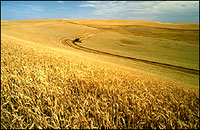Na’Taki Osborne is the national leadership development coordinator for the National Wildlife Federation. She is also a fellow with the Environmental Leadership Program and cofounder of the Center for Environmental Public Awareness, a consulting organization that supports community groups working to achieve environmental justice.

Monday, 21 Oct 2002
ATLANTA, Ga.
“I woke up this morning with my mind stayed on Justice.” — Adaptation of an old Negro spiritual
I wake up everyday with my mind stayed on justice! Today was no different. In fact, today is the beginning of a week that I will spend focused on environmental and economic justice — learning, strategizing, networking, and telling my story and that of my community. Starting on Wednesday, I will be attending the Second People of Color Environmental Leadership Summit in Washington, D.C., a historic event that will bring together people of color from across the United States and abroad to assess the progress made in the environmental justice movement during the last 11 years; to share stories of struggle and triumph; and to build on the action plan established at the first summit in 1991.
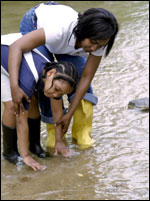
Osborne teaching students to perform water quality monitoring tests.
As I prepare for the summit, I am brought to a point of personal reflection. My work at the National Wildlife Federation and as a volunteer community activist centers on watershed protection issues, environmental justice and health, and community-leader and activist development. In other words, I help people in underserved communities gain the tools and skills to address environmental and quality-of-life issues that affect their communities; I also work to help them realize that they have a place at the table in environmental decision-making and other policy matters.
Just one week ago, I was engaged with fellow citizens of Atlanta, Ga., in a fight to get the city to fix its wastewater infrastructure, which is crumbling, failing, and more than 100 years old. This fight has been going on since the early 1990s; I have been involved for the last four and a half years. The city had the opportunity to do right by its citizens, its water and sewer ratepayers, and its rivers and streams by overhauling its combined sewer system, which currently dumps raw sewage into the yards, basements, and other areas of residents’ homes when there are heavy rainfalls. These combined sewers also greatly affect our public parks, school grounds, and other recreational areas for children and adults.
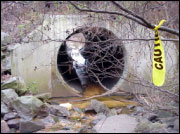
A draining problem.
The impacts of the combined sewers are devastating to a broad spectrum of Atlanta citizens, but especially to people of color and to the low-income communities that house 71 percent of the city’s combined sewer outfall points. The water from these sewers contains pathogens from untreated human, animal, and industrial waste; toxic materials such as petroleum products, heavy metals, and pesticides; and floating trash and debris. Depending on the amount and concentration of the sewage and how people are exposed to it, it can cause illnesses ranging from hepatitis and gastroenteritis to cholera, skin rashes, and giardiasis. Yet neither the human health effects nor the environmental burden was sufficient to create the political will to do the right thing. Instead of deciding to eliminate combined sewers, Atlanta plans to place a band-aid on top of a gaping wound.
Our defeat on this issue has taken a toll on my energy level. Everyday in the news, when I hear about the “War Against Terrorism,” I wish the government would put some money and effort into fighting the toxic terrorism in my community and many others across the country. Luckily, I am an eternal optimist. I know that things will get much more difficult before they get better, but I also know that the fight must continue. This work can be so frustrating sometimes. I have got to listen to the advice that I have given to many others over the years: This is not the time to give up! So although I have much to do here in my community (before I leave for DC tomorrow) and probably won’t sleep tonight, I am inspired by the thought of connecting with other activists and freedom fighters. I am hopeful that their stories will enlighten me and give me strength for the next phase of my journey.
Tuesday, 22 Oct 2002
RESTON, Va.
The Second People of Color Environmental Leadership Summit starts tomorrow, and I’m on my way to Washington, D.C. Today, I am stopping over in Reston, Va., at the headquarters of the National Wildlife Federation. As an employee in the “field,” I get the opportunity to connect with the headquarters staff via trips every six weeks.
This is a new role for me and feels quite different. For the last four years, my work at the federation was solely based in my community, the West Atlanta Watershed. I worked to protect water quality and ensure environmental justice at the grassroots level. I worked in a place that I care about and with people who inspire me. This summer, I received a promotion that requires me to do work at the national level. As the first national leadership development coordinator for the NWF, I am helping to build a strong, diverse, and effective grassroots constituency to win significant conservation victories and to strengthen and diversify the volunteer leadership of the organization.
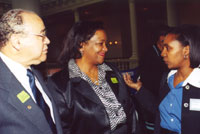
Osborne talks to bigwigs about clean water.
In some ways, this feels far different from what I thought that I would be doing at this point in my life, but in others, it is exactly where I am supposed to be: learning to use more sophisticated strategies to pursue my goals; working to make sure that diversity in the environmental movement is embraced as a necessity and an asset; and learning how to be more effective in creating the winds of change. I am in a sense moving away from my scientific roots and working more on the organizing side of my skill set.
I’ve been trying to unite those two very distinct passions — science and community organizing — ever since I lived in Baton Rouge, La., near the area now called “Cancer Alley.” Cancer Alley is the 100-mile strip between Baton Rouge and New Orleans that houses over 130 chemical, petrochemical, and pollution-generating facilities and has been identified by toxicologists as having the highest incidence of cancer, miscarriages, and birth defects in the country. My mother’s diagnosis with breast cancer was my impetus to get involved in the environmental justice movement. Early on in my career (well, actually as a college student), I recognized the need for informed scientists who also understand the social, political, and economic dynamics that affect environmental issues. I am striving to be such a person. I am an environmental engineer by education and training, but I’m committing my life to engineering social change.
This is what I am trying to do in Atlanta, and I’m fortunate that I can remain here and work in my new position. Atlanta is definitely more than a place where I work. It is where I went to college, and now it is home. I am not leaving until I help to make this part of the world a better place. In my community, we are “forgotten stakeholders.” We have to fight to get a seat at any decision-making table; we have to fight to make sure our voices are not stifled. We have to take every opportunity — every letter we write, and every conversation we have — to affirm our vision for a better community. And that is why I work all day and go to community meetings at night and on weekends and participate in the meetings after the meetings.
And this is also why it is important for me to go to this summit in D.C. I was a high school student during the first summit in 1991. I barely knew what environmental racism and injustice were. I knew that the air smelled bad and that the water tasted bad in Baton Rouge, but I did not know much else. Since then, my eyes have been opened. I have been awakened to the injustice waged on people all over the world and especially in my community — especially when they are people of color or when they are poor. We need strong warriors to challenge the injustices. I just pray that I am strong enough to endure the fight.
Wednesday, 23 Oct 2002
WASHINGTON, D.C.
The Second People of Color Environmental Leadership Summit started today! On my way into Washington, D.C., from Baltimore, where I visited with friends last night, I was overwhelmed with excitement about the experience that awaited me — the people I would meet, the connections I would make, the issues I would discuss, the new information I would learn, and the inspiration and hope that I would bring back with me afterward.
Although excited, I am actually kind of tired. I had a whirlwind day at the National Wildlife Federation headquarters yesterday. I had meetings from the time I arrived until the end of my work day. I hate meetings, but at least yesterday’s were all very productive and helped provide some direction for me in terms of my new position. I have been charged with helping other staff think in new ways about how we do our work, the other people and organizations with whom we collaborate, and how best to use the resources available to us.
In my meetings yesterday, I was happy to learn that nine colleagues of mine from NWF will be attending at least a portion of the summit. This shows an admirable commitment to exploring the role that mainstream green groups can play in developing alliances with grassroots environmental justice organizations. This topic, I’m sure, will spark quite a bit of conversation at the summit. There is a panel this afternoon that will attempt to address the issue; the panelists include high-level staff from at least six mainstream environmental groups. There will also be a presentation entitled “Ten Years Later” that will discuss a letter sent to mainstream groups 10 years ago by the Southwest Network for Environmental and Economic Justice. That letter challenged these groups’ exclusionary hiring practices and pointed out that many of their policy positions were detrimental to people of color in the Southwest United States. We’ll see how far we’ve come in the past decade.

To clean up this stream, mainstrem and grassroots groups will need to work together.
I am in an interesting position as regards the relationship between mainstream and community-based groups. I work for a mainstream organization, but I belong to, work with, and have ties to many grassroots organizations. As a result, I have credibility in both worlds (although in some cases it took time to gain this credibility precisely because of having a foot in each world). In some situations, I have begun to bridge the gap; for example, I’ve been successful in getting NWF to be responsive to the needs and concerns of grassroots groups and the potential for productive collaboration.
Although operating in two sectors, I make it a point not to choose sides. My community interests make up the essence of who I am and keep me grounded. My mainstream connection is not something that I apologize for; it is something I try to use to benefit all people regardless of race and class to advance an environmental and social justice ethic. I can honestly say that my politics are the same no matter what arena I am operating in or what issue I’m working on.
In the lobby of the summit hotel, I reconnected with old and newer friends and colleagues from all sectors of the movement — mainstream environmental groups, grassroots groups, government agencies, environmental consulting firms, and civil rights and social justice organizations. Despite the variety of these people’s professional affiliations, I have worked with them all at some point in my journey to further the causes of environmental and social justice. This journey goes well beyond my professional commitments. It is my life’s work, a purpose ordained by God, and I am answering the call.
Thursday, 24 Oct 2002
WASHINGTON, D.C.
It is day two of the Second National People of Color Environmental Leadership Summit, and I already feel like I have been here all week. The agenda is action-packed. And the people have come. They are multiracial and multiethnic. They come from big cities and small towns, from rural areas, from Native American reservations and territories. They are all here with their minds “stayed on justice,” all yearning to breathe clean air, drink clean water, and ensure that their children can make mud pies in their backyards without fear of exposure to toxic contamination. They are standing in solidarity with workers who labor in sweatshops and modern-day plantations for non-livable wages, only to be exposed to environmental and occupational hazards. They are a beautiful collection of freedom fighters and justice seekers, and they are here to celebrate their progress and to reaffirm the role that grassroots organizations must play in leading the environmental justice movement.
The people gathered here have expressed over and over again the same sentiments that were aired at the first summit: “We must speak for ourselves,” and “let the people who are affected by environmental racism and injustice make the key decisions.” They speak from a position of strength and confidence, and they refuse to have their voices stifled or to have their movement co-opted by opportunists who are lining their pockets at the expense of people, their communities, and the grassroots organizations they form.
Yesterday’s panel discussion on the role that mainstream green groups can play in building alliances with grassroots environmental justice organizations was quite interesting and thought-provoking. The green groups represented at the panel seemed to have made notable progress in the last 10 years in terms of having people of color on staff and on their boards of directors. They have even expanded their programmatic work to include environmental justice issues. And in many cases, they have created environmental justice programs. Yet it was clear that mainstream environmental groups still have a great deal to learn about collaboration with grassroots environmental justice organizations.
I have long recognized a few of the points that grassroots organizations emphasized to mainstream environmental groups during the panel discussion. These points include, but are not limited to, the following:
- Process is just as important as results;
- Collaborative work requires that decision-making be collective, not unilateral;
- Credit for victories must be shared;
- True collaboration includes collaborative fundraising; and
- Collaborative work includes all parties coming to the table as equal partners.
There has been some progress made in these areas, but there are many more miles to go before we sleep.
On a different note, my roommate at the summit is an amazing woman from Baton Rouge, La., where I spent part of my childhood. She got interested in the environmental justice movement through her work as a tenants’ rights organizer in a public housing facility. Her initial concerns were not environmental justice per se, but rather quality of life and healthy and safe living conditions. She became a part of the movement 10 years ago, after an environmental justice organizer came to her community several times and exposed her to others who were organizing their communities around environmental justice issues.
We stayed up late last night to share our experiences and stories with one another. I am encouraged by the story of her struggle — both its challenges and its triumphs. This is what drew me to the summit: the opportunity to be strengthened by stories of other oppressed people rising up to challenge racism, classism, globalization, and injustice of all sorts. I need to hear these stories to broaden the context of my organizing and increase my understanding of the issues. I need to hear these stories so that I might go back home and inspire hope in others. I need to hear these stories so that I can be a better agent of change. I need to hear these stories because the victories ahead for my community just might depend on them!
Friday, 25 Oct 2002
WASHINGTON, D.C.
For we who believe in freedom, we can not rest until it’s ours.” — Adaptation of an old Negro spiritual, “Sweet Honey in the Rock”
I live daily by the words of freedom fighter and abolitionist Frederick Douglass: “If there is no struggle, there is no progress. … Power concedes nothing without a demand.” I am feeling this more today than ever. The responsibility is upon us all to challenge injustice wherever it exists, to use our individual and collective power to seek a more just, more peaceful, and more sustainable future for generations to come. We must struggle until the very end — until our power is realized, until our liberation is here, until our change comes.
It’s day three of the Second National People Of Color Environmental Leadership Summit, and there is one more day to go. The stories of struggle and victory have been shared, the injustices have been exposed, and the culprits have been “called out”; next, the marching orders will have to be given. Many issues and community concerns have been brought to the table — some with resolution in sight and others that will take much longer to solve.
My experience here at the summit has been an invaluable one. The plenary sessions, working groups, and workshops have provided great information and a variety of perspectives on many important issues. The most valuable parts to me, however, have been the personal connections. I have been nurtured, encouraged, and inspired by the fiery spirits of the youth and young adults, and have been taken under the wings of my elders of all ethnicities. I have been given pearls of wisdom that are unforgettable. I have taken away inspiration that will remain stored in my heart and strategies that will help me back home in my community in Atlanta.
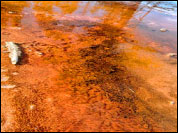
Atlanta-area pollution Osborne is working to clean up.
On Monday, when I started this journal, I was feeling down because of actions taken by my local government that will further expose my community to environmental hazards. I was saddened because we lost the battle for justice and for a better quality of life. Today, I am invigorated and even more committed to keeping on. My spirit has been touched, my heart has been convinced, and I know what I must do. I would like to end these journal entries with some positive affirmations and tools for the struggles that have been shared with me this week, and that I want to remember for as long as I do this work:
“My participation in the movement is based on the fact that I have faith in the people and their power.”
“Just keep on keeping on! We especially need the young people. Some of us old folk are passing over, so it’s time for you all to carry on the fight.”
“The greatest leaders are those who are affected; let them lead.”
“Freedom is not free.”
“The point at which we stop struggling is the point at which we begin to lose all that we have gained.”
